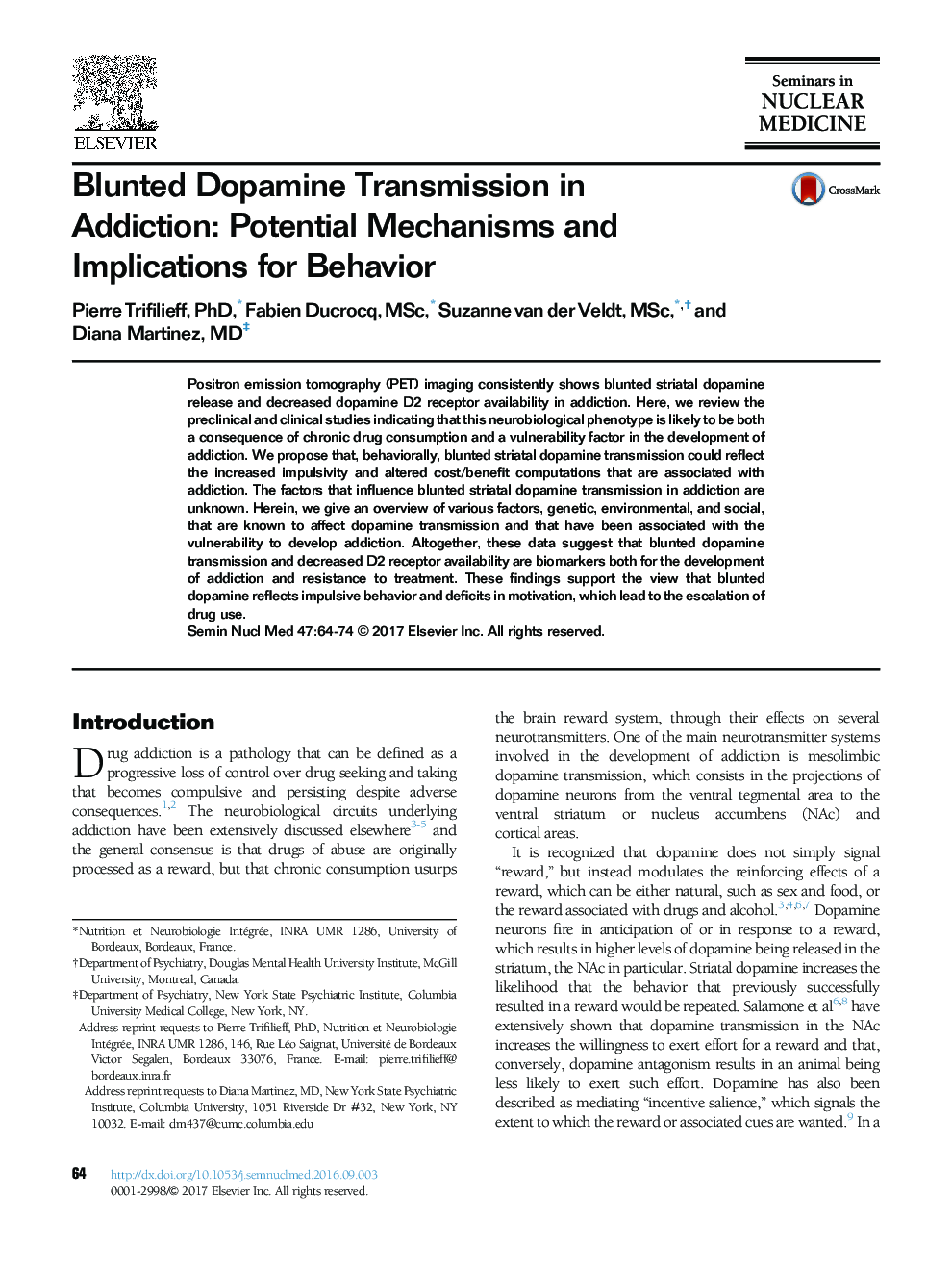| Article ID | Journal | Published Year | Pages | File Type |
|---|---|---|---|---|
| 5728301 | Seminars in Nuclear Medicine | 2017 | 11 Pages |
Positron emission tomography (PET) imaging consistently shows blunted striatal dopamine release and decreased dopamine D2 receptor availability in addiction. Here, we review the preclinical and clinical studies indicating that this neurobiological phenotype is likely to be both a consequence of chronic drug consumption and a vulnerability factor in the development of addiction. We propose that, behaviorally, blunted striatal dopamine transmission could reflect the increased impulsivity and altered cost/benefit computations that are associated with addiction. The factors that influence blunted striatal dopamine transmission in addiction are unknown. Herein, we give an overview of various factors, genetic, environmental, and social, that are known to affect dopamine transmission and that have been associated with the vulnerability to develop addiction. Altogether, these data suggest that blunted dopamine transmission and decreased D2 receptor availability are biomarkers both for the development of addiction and resistance to treatment. These findings support the view that blunted dopamine reflects impulsive behavior and deficits in motivation, which lead to the escalation of drug use.
